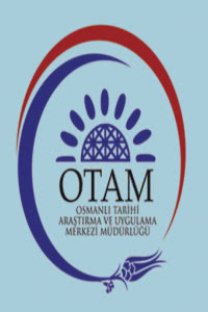Trying to Impose the Reforms in the Periphery: Actions and Reactions to the Tanzimat in Cyprus The Case of the Muhassıl Mehmet Talat
Reformların Taşrada Uygulanmaya Çalışılması: Kıbrısta Tanzimata İlişkin Tepkiler ve Karşı Tepkiler Muhassıl Mehmet Talat Vakası
___
Archival Sources Başbakanlık Osmanlı Arşivi, Kıbrıs Şer\\\'iyye Sicil Defteri, Defter n. 38.Başbakanlık Osmanlı Arşivi, Cevdet Dahiliye, Gömlek n. 6012, Dosya n. 121.
The National Archives, London, Foreign Office, FO 195/102.
KYRIAZIS, Neoklis, Diakivernisis Kyprou, oi satrapai aytis, (The Administration of Cyprus. Its Satraps), Kypriaka Hronika, 9 (1933), pp. 65-80, 81-122, 172-189.
KYRIAZIS, Neoklis, Hronografikon Simeioma, (Chronicle) Kypriaka Hronika, 8 (1931), pp. 81-105.
KYRIAZIS, Neoklis, Proksenika Eggrafa [Consular documents], Kypriaka Hronika, 7 (1930), pp. 218-220.
Bibliography AYMES, Marc, Reform Talks: Applying the Tanzimat to Cyprus, in M. N. Michael, M. Kappler and E. Gavriel (eds), Ottoman Cyprus. A Collection of Studies on History and Culture, Harrassowitz, Wiesbaden 2009, pp. 107-116.
AYMES, Marc, Un grand progress sur la papier. Histoire provinciale des réformes ottomanes à Chypre au xix e siècle, Peeters, Paris 2010.
DAVISON, H. Roderic, The Advent of the Principle of Representation in the Government of the Ottoman Empire, in Roderic H. Davison, Essays in Ottoman and Turkish History, 1774-1923, University of Texas, Texas 1990, pp. 96-109.
DAVISON, H. Roderic, Reform in the Ottoman Empire, 1856-1876, Gordian Press, New York 1973.
DEMIRYÜREK, Mehmet, Osmanlı Reform Sürecinde Kıbrıs, Akademik Kitaplar, İstanbul 2010.
DEMIRYÜREK, Mehmet, Tanzimat Donemi Kıbrıs Muhassıllarından Mehmet Talat Efendi ve Tanzimat Fermanının Kıbrısta Uygulanması, in E. Causevic, N. Moacanin, V. Kursar (eds), Perspectives on Ottoman Studies. Papers from the 18th Symposium of the International Committee of Pre-Ottoman and Ottoman Studies, Lit Verlag, Münster 2010, pp. 441-455.
DIONYSIOU, George, The Implementation of the Tanzimat Reforms in Cyprus (1839-1878), Mam Publications, Nicosia 2009.
FINDLEY, Vaughn Carter, The Tanzimat, in Reşat Kasaba (ed.), The Cambridge History of Turkey, vol. 4, Cambridge University Press, New York 2008, pp. 11-37.
HACKETT, John, Istoria tis Orthodoxou Ekklisias tis Kyprou (History of the Orthodox Church of Cyprus), vol. 1, Athens 1923.
HILL, George, A History of Cyprus, vol. 4, Cambridge University Press, Cambridge 1972.
HOURANI, Albert, Ottoman Reforms and the Politics of Notables, in R.L.Chambers and W. R. Polk (eds), Beginnings of Modernization in the Middle East, University of Chicago Press, Chicago 1968, pp. 48-61.
İNALCIK, Halil, Application of the Tanzimat and its Social Effects, in The Ottoman Empire. Conquest, Organization, Economy. Collected Studies, Variorum Reprints, London 1978, pp. 3-33.
İNALCIK, Halil, Tanzimatın Uygulanması ve Sosyal Tepkileri, Belleten, 28 (1964), pp. 623-690.
THEOHARIDES, Ioannis Anekdoto fermani gia tin efarmogi tou Tanzimat stin Kypro, (Unpublished Firman for the Implementation of Tanzimat in Cyprus), Journal of the Cyprus Research Centre, 13-16 (1984-1987), pp. 447-458.
KAYNAR, Reşat, Mustafa Reşit Paşa ve Tanzimat, Türk Tarih Kurumu Basımevi, Ankara 1954.
KUSHNER, David, Palestine in the Late Ottoman Period. Political, Social and Economic Transformation, E.J.Brill, Leiden 1986.
MAOZ, Moshe, Ottoman Reform in Syria and Palestine, 1840-1841, Clarendon Press, Oxford 1968.
MICHAEL, N. Michalis, Panaretos, 1827-40: His Struggle for Absolute Power during the Era of Ottoman Administrative Reforms, in Andrekos Varnava and Michalis N. Michael (eds), The Archbishops of Cyprus in the Modern Age, Cambridge Scholar Publishing, London 2013, pp. 69-87.
MICHAEL, N. Michalis, I Ekklisia tis Kyprou kata tin othomaniki periodo. I stadiaki sigkrotisi enos thesmou politikis eksousias (The Church of Cyprus during the Ottoman Period, 1571-1878. The Formation Process of an Institution of Political Power), Cyprus Research Centre, Nicosia 2005.
ORTAYLI, İlber, Tanzimat Devrinde Osmanlı Mahallî İdarerleri (1840-1880), Türk Tarih Kurumu Basımevi, Ankara 2000.
SHAW, J. Stanford, The Origins of Representative Government in the Ottoman Empire: An Introduction to the Provincial Councils, 1839-1876, in Winder R. Bayly (ed.), Near Eastern Round Table, 1967-68, New York University Press, New York 1969, pp. 53-142.
SHAW, J. Stanford, The Nineteenth-Century Ottoman Tax Reforms and Revenue System, International Journal of Middle East Studies, 6 (1975), pp. 421-459.
STAVRIDES, Theoharis, List of Governors, Prelates and Dragomans of Cyprus (1571-1878), in M. N. Michael, M. Kappler and E. Gavriel (eds), Ottoman Cyprus. A Collection of Studies on History and Culture, Harrassowitz, Wiesbaden 2009, pp. 357- 366.
YALÇINKAYA, Mehmet Alaaddin, The Provincial Reforms of the Early Tanzimat Period as Implemented in the Kaza of Avrethisarı, Osmanlı Tarihi Araştırma ve Uygulama Merkezi Dergisi, 6 (1995), pp. 344-385.
- ISSN: 1019-469X
- Yayın Aralığı: 2
- Başlangıç: 2006
- Yayıncı: Ankara Üniversitesi Osmanlı Tarihi Araştırma ve Uygulama Merkezi
An Inquiry into the Ottomans' Knowledge and Perception of the Gypsies in the late 19th Century
19. Yüzyılın İlk Yarısında Gülnar Yörükleri
Osmanlı Devleti ile Ermenistan Cumhuriyeti Arasındaki İlişkiler (1918-1920)
Osmanlı-Avrupa Telgraf Hatlarında Sırbistan Emareti'nin Rolü
1897 Türk-Yunan Savaşı'nda Ecnebilerin Zararlarının Tazmîni Meselesi
Hüseyin Hilmi Paşa'nın Yemen Valiliği ve Ona Yapılan Suikast
Avrupalıların Gözlemlerinde Osmanlı Eğitimi ve Bilimi (16-18.Yüzyıllar)
